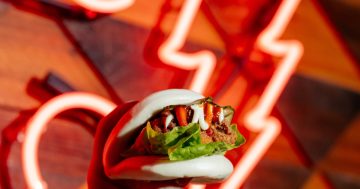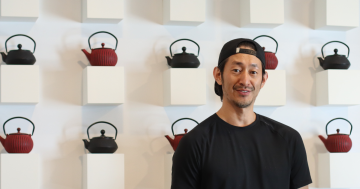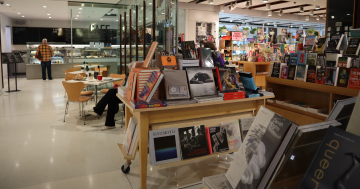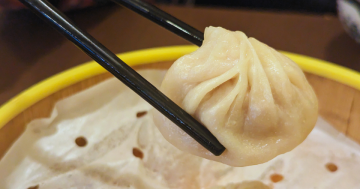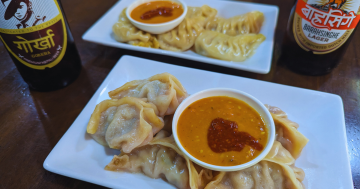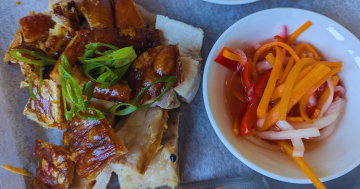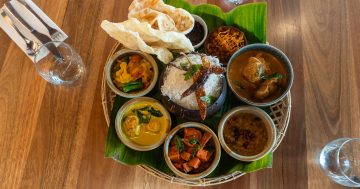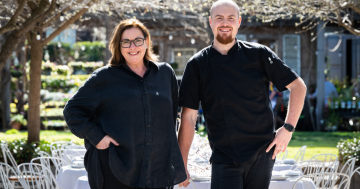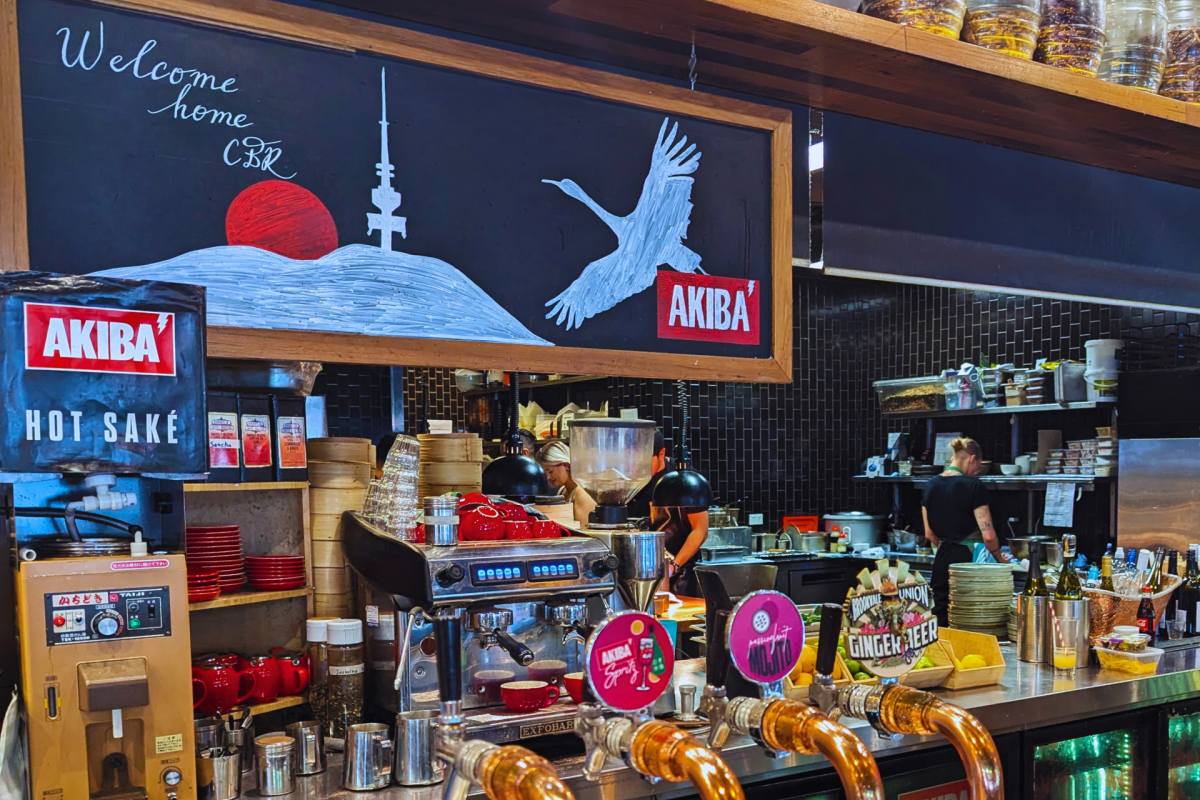
Hot saké on tap at Akiba. Photo: Tenele Conway.
It’s hard to remember a time when Akiba’s miso dengaku eggplant with its pepita seeds, puffed rice and nori hadn’t changed our lives.
When Akiba first opened in December 2014 on the corner of Bunda Street and Bible Lane, they were one of the first to take a punt on an up-and-coming area. Customers lined up to get a taste of the new restaurant, and there was excitement that this corner of the city was coming alive again.
Now packed to the brim with restaurants, ice creameries and a new hotel being built, the Bunda Street precinct is one of the city’s premier entertainment districts.
The Harvac Group that owns Akiba has invested heavily in the area, with their venues Loquita, The Pearl and Wilma also being situated along Bunda Street and in the nearby Garema Place.
Another thing Harvac has invested heavily in is the saké menu at Akiba. Boasting the largest selection of saké in Australia with over 180 varieties, Akiba is wall-to-wall bottles.
According to Nikkei Asia, worldwide popularity for saké is growing, with the export market soaring by 70 per cent between 2021 and 2023 and Australia is the 8th largest export market globally.
Keen to ride the saké wave myself, I headed to Akiba to find out more about Japan’s famous fermented rice wine and its place at one of Canberra’s most popular restaurants.
Luckily, Akiba’s saké menu is set up for self-exploration and education, and I was immediately informed that while saké is definitely not a whisky, it’s also technically not a rice wine.
“Saké is commonly referred to as a rice wine, which is misleading as it is produced by conversion of starch into fermentable sugars by the use of a cultivated Koji (rice mould) and brewed in a similar fashion to beer, however, this process is symbiotic which is unique in the world of alcohol production,” the menu explains.
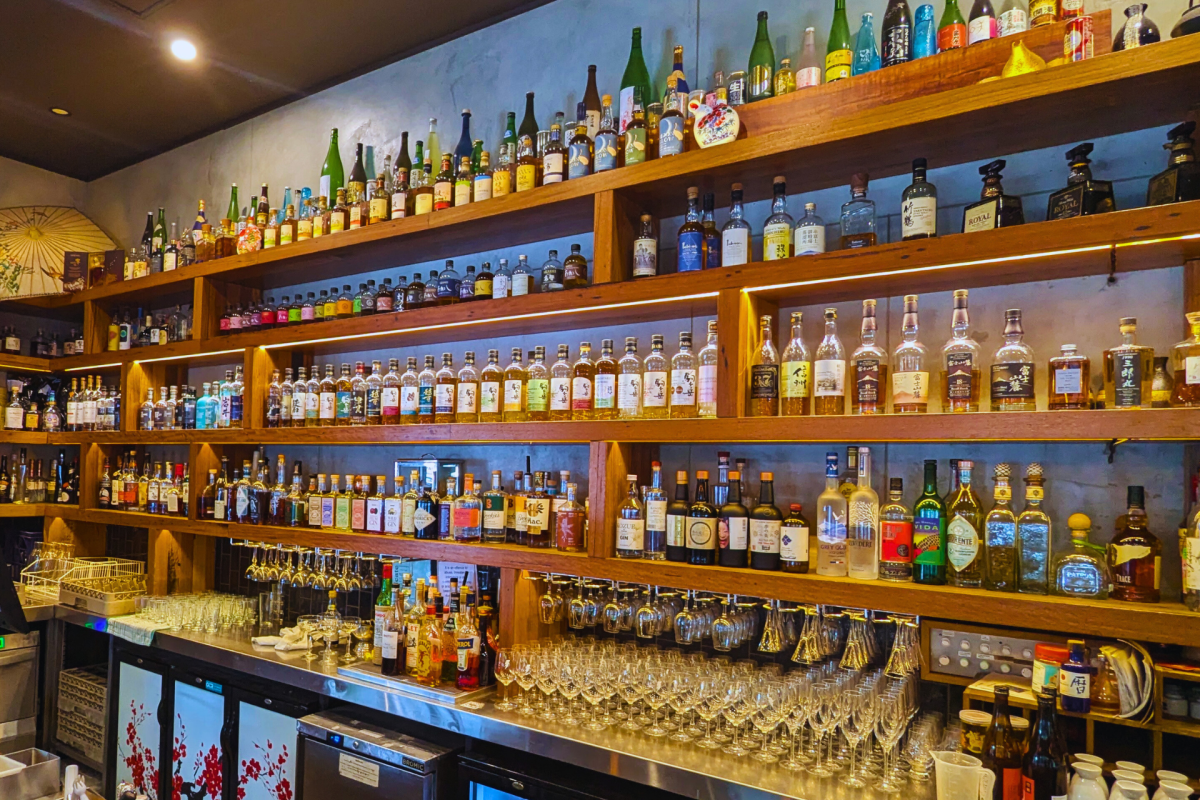
Akiba offers Australia’s largest saké menu. Photo: Tenele Conway.
The menu also has a helpful set of tasting notes on each saké, a grading and a scale from sweet to dry so you know what to expect.
With no personal guidance on offer, the saké flight seemed the safest choice. The flight comes with a selection of four sakés and an information card about the flavours, production methods and grades for each nip.
Seeing that I was looking for an educational experience, the hostess who had delivered me to the bar jumped in with an additional explainer card which stepped me through the grades of saké. Prior to fermentation, the rice goes through a polishing process that removes the protein and fats that gather on the surface and the percentage number quoted on each saké refers to the percentage of grain left compared to its original size. The amount of remaining grain determines the final taste.
Armed with this knowledge, I was able to sip each saké and compare the differences between those that had been polished with 70 per cent grain remaining, 60 per cent and 50 per cent remaining, and the tastes did vary significantly from clean and fresh on the palate that the Kizakura Onigoroshi delivered through to the tangy and citrussy experience of the Kaganotsuki Gekko.
A saké experience wouldn’t be complete without some of Akiba’s Asian fusion flavours. Not wanting anything to compete with the saké, I ordered the kingfish with coconut, nam jim and coriander, a dish that’s been on the menu from day one. The sweet, fresh sashimi was an ideal accompaniment to the dry and subtle saké.
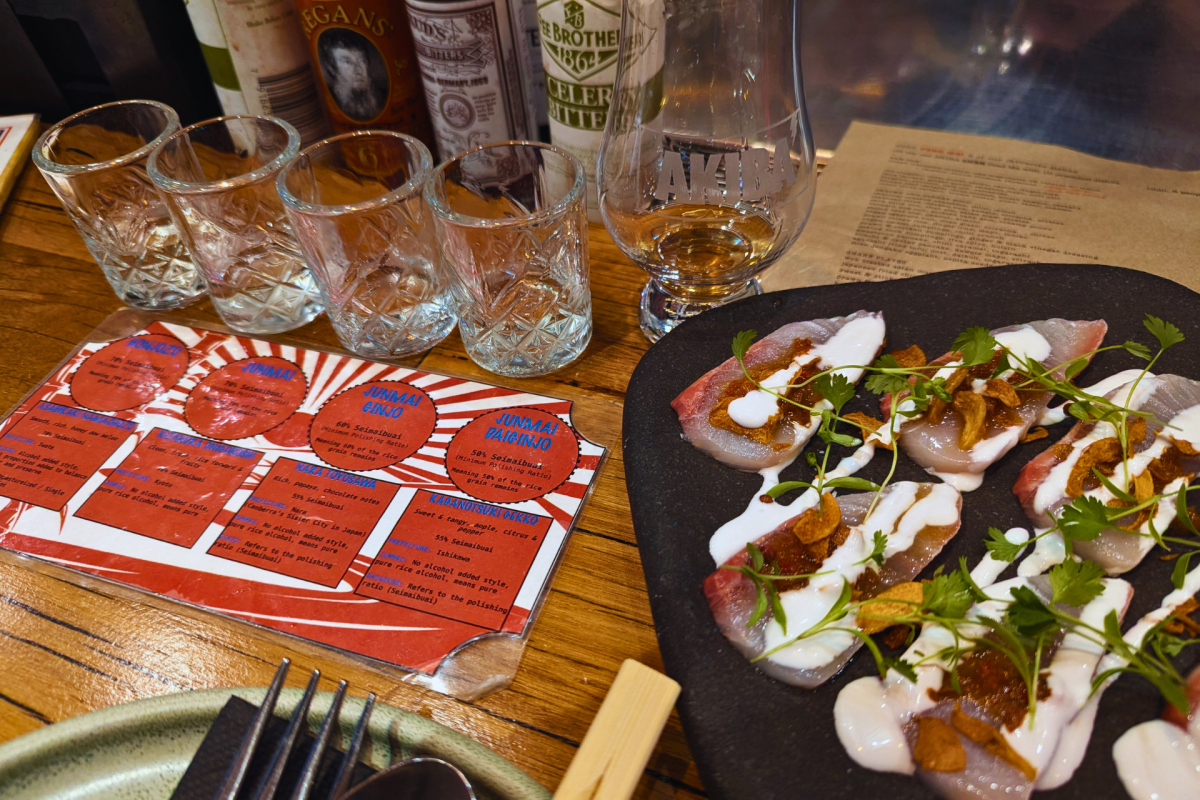
Kingfish and a saké flight at Akiba. Photo: Tenele Conway.
Stopping by to check how the tasting was going, the hostess poured a couple of nips of the fruitier sakés on the house to showcase the depth and range of saké on the menu. These are entirely different experiences; one is a cloudy, sweet peach saké, much like fruit juice or nectar, and the other is a tart and punchy plum flavour.
Saké at Akiba comes in a range of other forms as well. There’s a machine that spits out hot sake and while I didn’t partake, it seems like an ideal beverage for a Canberra winter. There’s also a range of premixes in cans that deliver more of a cocktail experience.
With their expansive saké menu, Akiba is at the forefront of delivering quality saké to Canberrans, just be prepared to do a little reading to get the full experience on offer.
Akiba is located on Bunda Street in the Canberra CBD and is open Sunday until Thursday from 11:30 am until 10 pm and Friday and Saturday from 11:30 am until 11 pm. Bookings can be made online.












